Step into our library, and you’ll discover a world of knowledge and history waiting to be explored. Our shelves are not just filled with books. They are home to a wide collection of academic treasures, including both physical objects and intangible knowledge. From ancient maps to the very first computer that sparked a technological revolution, these artifacts are a gateway to understanding the past and envisioning the future.
However, there’s a challenge we face. Most of these precious objects placed in the depths of our depot, hidden away from our users. Even though these treasures are recorded digitally, they remain unseen to those who are eager to explore them. Realizing this need, we have embarked on an exciting project to redesign our collection wall. This remarkable wall, surrounded with books and painted in a captivating shade of blue, takes center stage in our main hall. Our vision is to transform it into a central touchpoint, seamlessly bridging the past, the present, and the future of knowledge across various subjects.
We launched a Service Quick Dive project, teaming up with two design assistants from Faculty of Industrial Design Engineering , Betsie Loeffen and Laura van der Linden. Together, we aimed to dive into the user journey of students who need a deeper understanding of the history and context behind the subject. Our mission was to discover where students usually start their search for historical information and the different entry points of their journey. Also, we aimed to uncover the challenges students face and identify opportunities for improvement throughout their experience.
1. Service Safari
As part of the project, design assistants started an exciting adventure, ”service safari.” With a goal of exploring the depths of academic heritage, they took different paths. Laura chose to follow the channels approach, she navigated through the Tresor, Heritage website, collection wall, map room, exhibitions, discovering hidden gems along the way. On the other hand, Betsie followed a DIY approach, she entered into the library’s archives, conducted personal research, and discovered academic heritage through her own efforts. These two different approaches gave us a lot of valuable information and helped us understand better how students explore and discover our academic heritage.
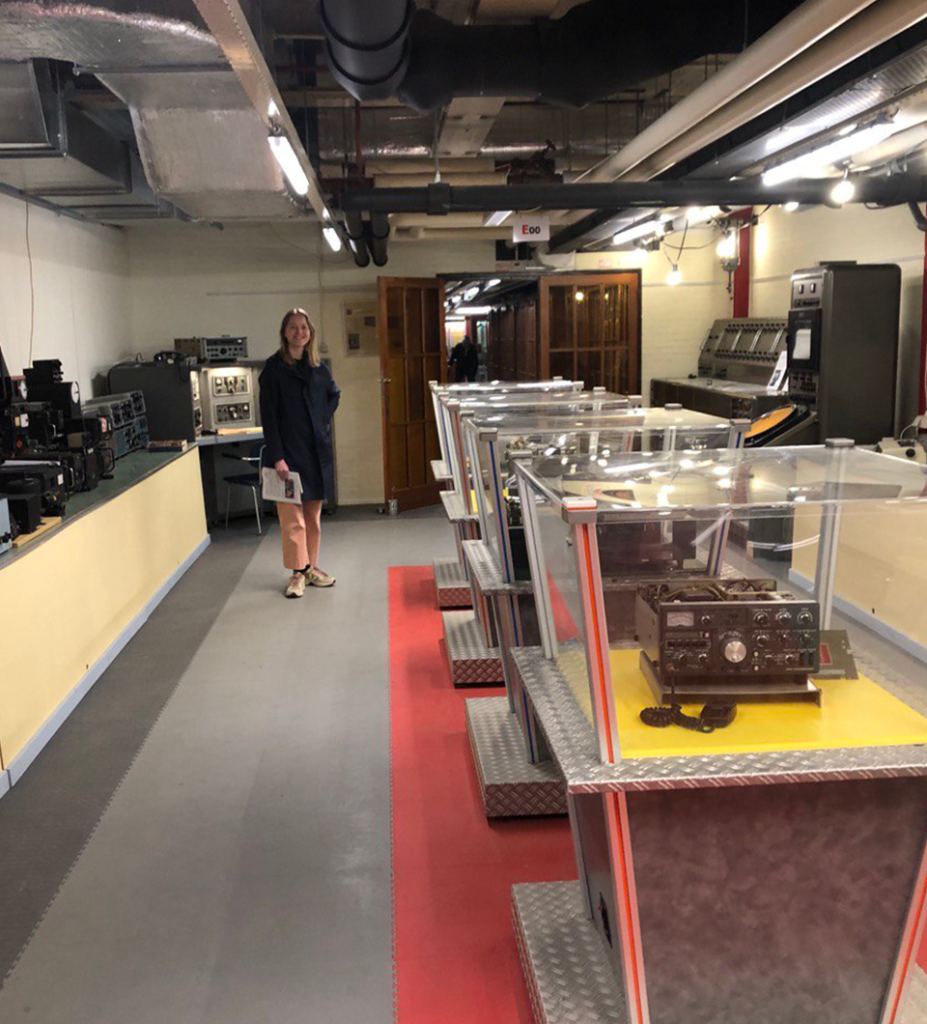
2. User Journey Map and Stakeholder Session
In the next phase of the project, Betsie and Laura created three distinct user journey maps based on the insights they gathered from their service safaris. Each journey represents a different way in which students explore academic heritage. After illustrating these journeys in a clear and understandable way, they conducted a stakeholder session with the academic heritage team. During the session, they guided the participants to observe and reflect upon the journey steps, have discussion moments for questions and feedback, and concluded the session by highlighting the most promising ideas to be used in the next steps of the project.
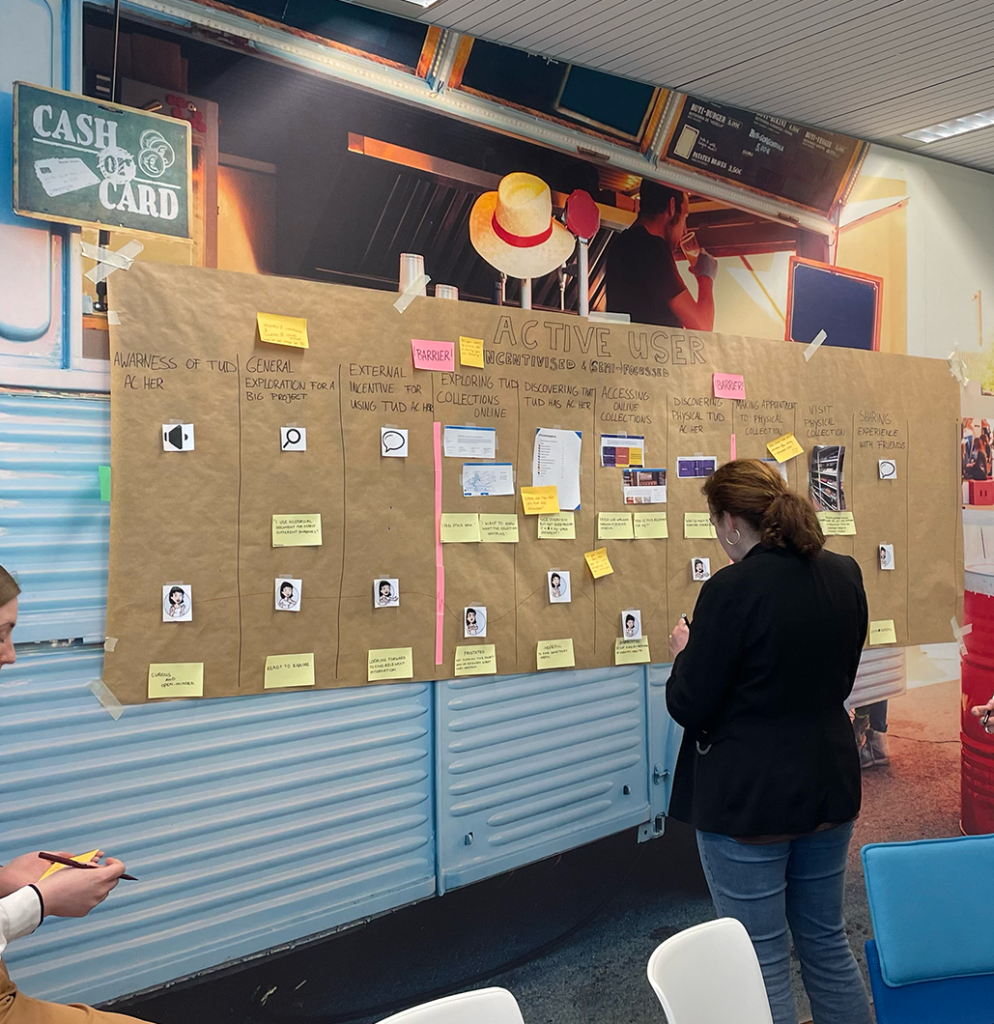
3. Co-creation
After gathering the results from the first stakeholder session, the design assistants created the final user maps based on the feedback they received. They organized a creative co-creation session, once again for the same stakeholder group, by posing three “How might we…?” questions:
- How can we spark the interest of students?
- How can we embed academic heritage in education?
- How can we guide students in uncovering the covered heritage?
The session proceeded with an ideation session focused on addressing these questions. It concluded by placing the ideas on a decision matrix, which measures the ease of implementation and the potential impact in uncovering the covered heritage.
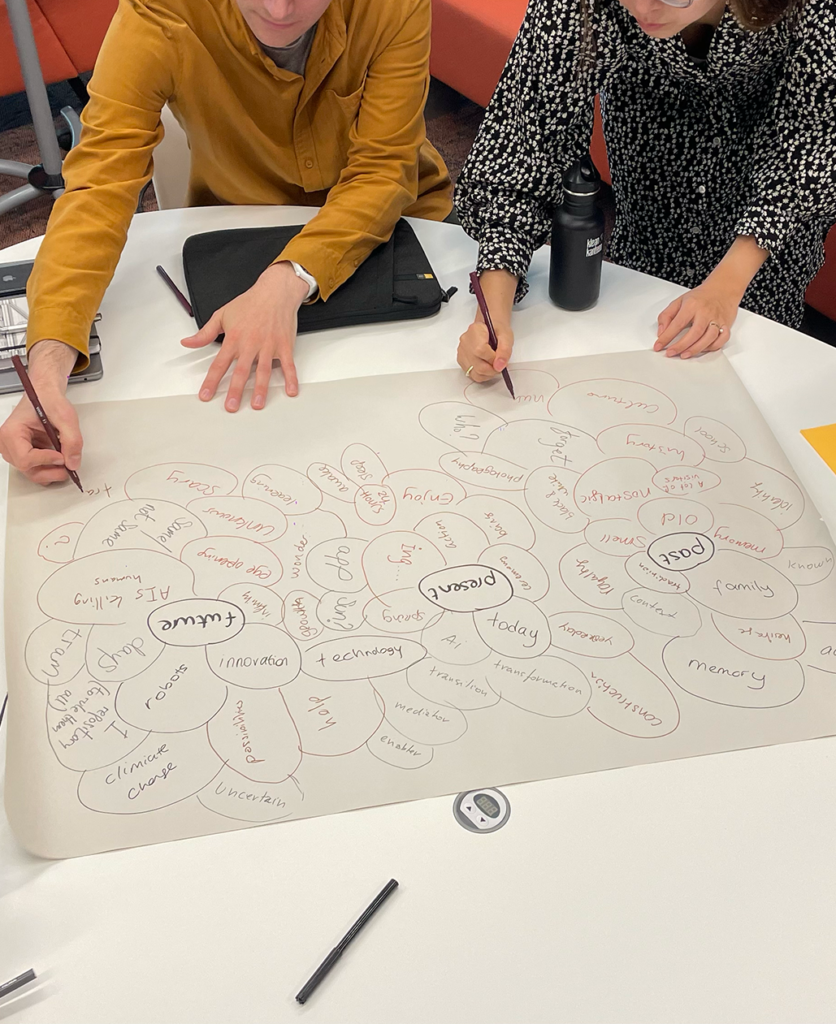
4. Design Solutions
As a result of the co-creation session, the design assistants decided to focus on two directions for their design solutions: the academic heritage in the collection wall and the curriculum.
Exhibition Building Blocks
This collection provides practical guidelines, tips, and examples for creating engaging exhibitions featuring the Academic Heritage collections at TU Delft. It covers various approaches, including interactive displays and immersive installations, to effectively engage students. The framework of Building Blocks is divided into three categories: initiating interest, the context, and the interaction. These categories serve as containers for elements that assist in shaping a new exhibition for the collection wall. By utilizing these building blocks, unique exhibition spaces can be created while considering the specific needs and preferences of TU Delft students.
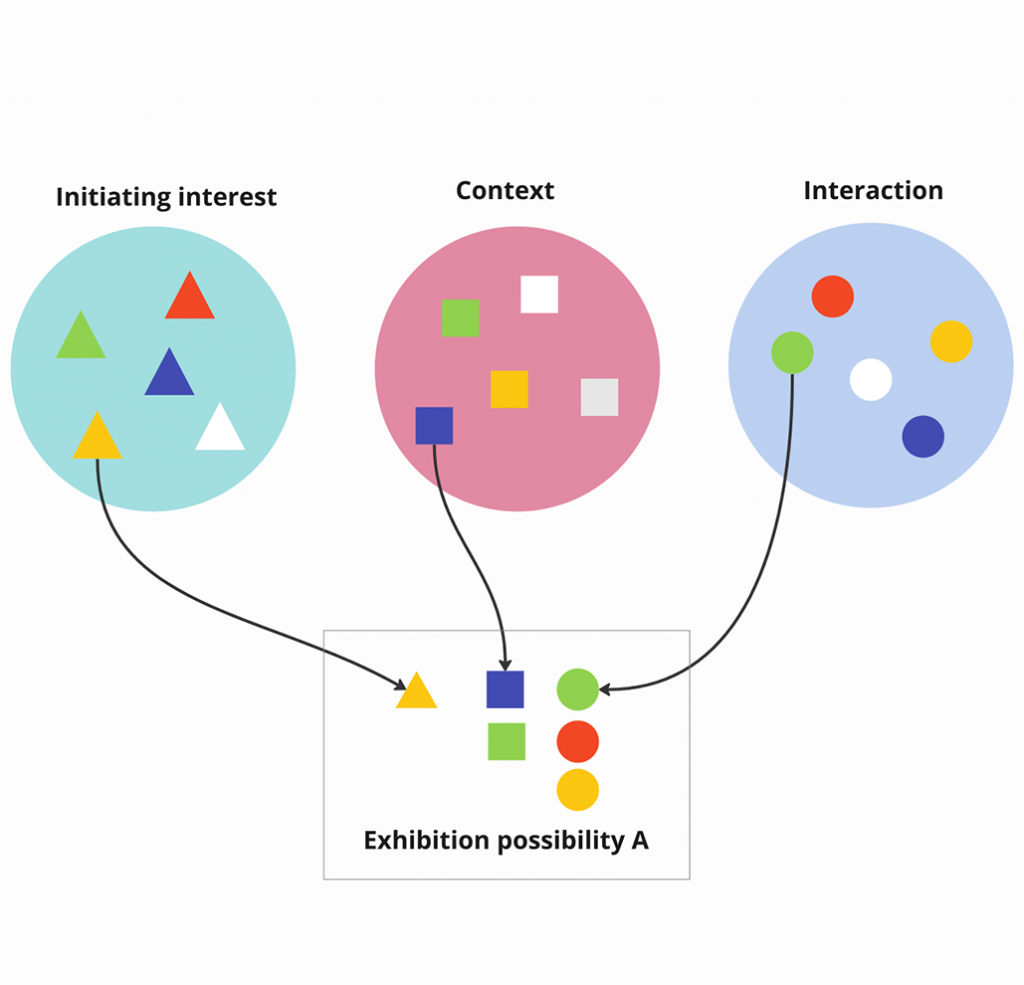
Academic Heritage in the Curriculum
This guideline emphasizes the integration of AH into the curriculum to enhance student engagement. By using AH to provide real-world applications of theoretical concepts or to explore the world we live in, students can benefit from expanded educational experiences. However, it is crucial to convince and guide teachers in incorporating Academic Heritage into their courses. The key principles for successful integration include building long-term connections, spreading enthusiasm contagiously, connecting the past to the present, and fostering a symbiotic relationship.
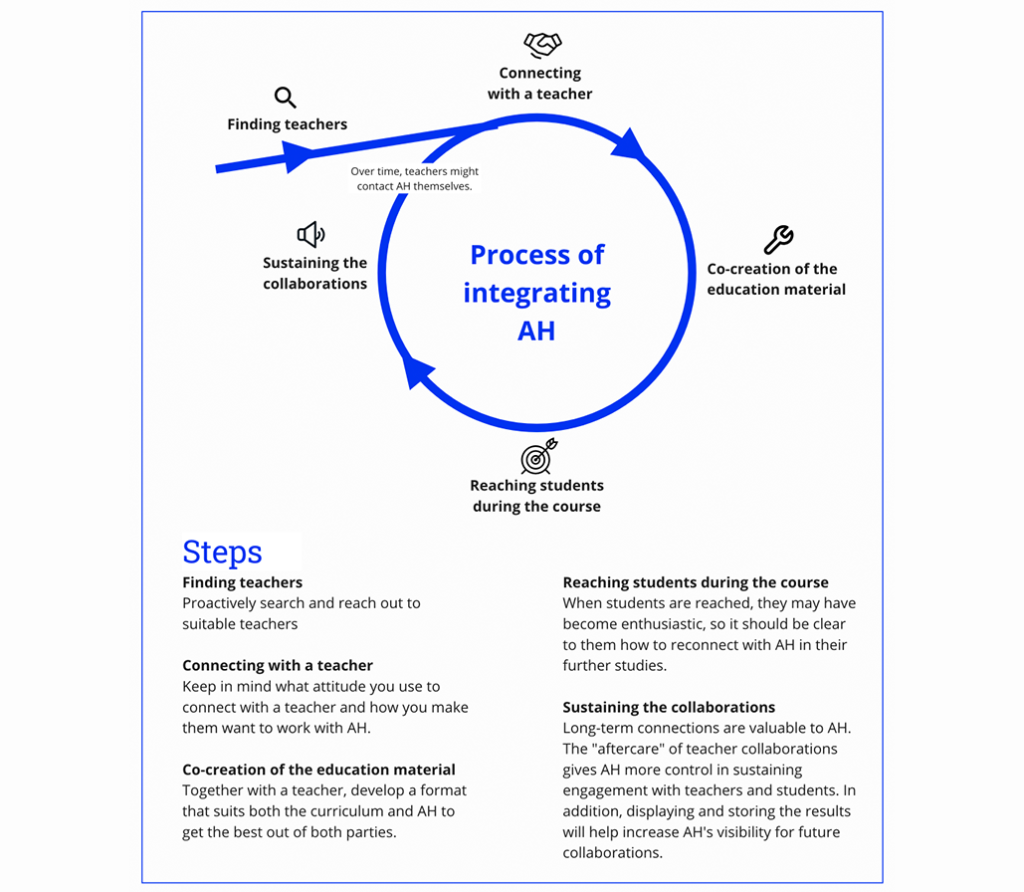
Overall, these design solutions aim to enhance student engagement with Academic Heritage both through exhibitions and within the curriculum. For more information about the project, please contact Betsie Loeffen and Laura van der Linden, or service design team.